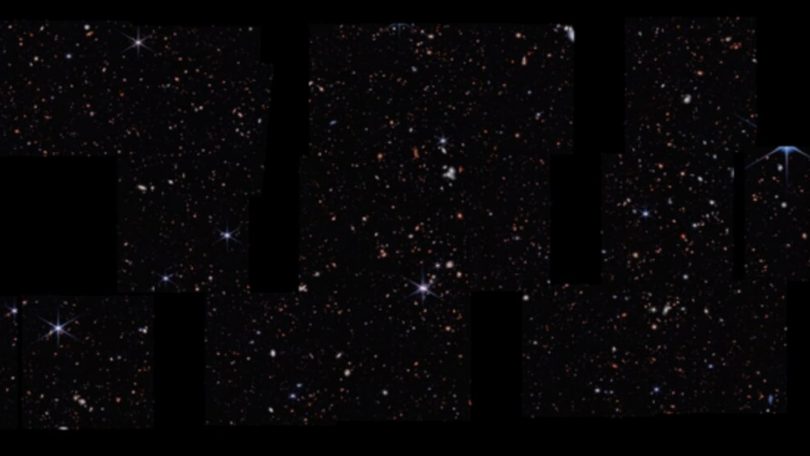[ad_1]
The James Webb Telescope made a groundbreaking discovery by identifying the “most-distant supermassive black hole” to date in a galaxy named CEERS 1019. This black hole existed a little over 570 million years after the big bang and is larger than any previously known black holes, as per NASA. Additionally, two smaller black holes that existed 1 and 1.1 billion years after the big bang were also found.

According to NASA, the evidence was provided by Webb’s Cosmic Evolution Early Release Science (CEERS) Survey, led by Steven Finkelstein from the University of Texas at Austin. The survey utilised Webb’s highly detailed “near- and mid-infrared images and spectra data to make these discoveries”.
One of the lead researchers involved in the discovery said, “Looking at this distant object with this telescope is similar to examining data from black holes found in galaxies near our own.”
The team was able to differentiate the emissions from the black hole and its host galaxy in the spectrum. Furthermore, they could determine the amount of gas the black hole is consuming and calculate its galaxy’s rate of star formation.
The study also suggests that a galaxy merger may have contributed to the activity observed in this particular black hole, potentially leading to increased star formation.
CEERS 1019
The study conducted on CEERS 1019 revealed that it is remarkable not only for its ancient age but also for the relatively low weight of its black hole. In terms of appearance, CEERS 1019 is observed as three bright clumps rather than a single circular disk.
A member of the CEERS team from the Rochester Institute of Technology in New York as quoted by NASA said, “We’re not used to seeing so much structure in images at these distances.”
More about this black hole
-This particular black hole has a mass of about 9 million times that of our Sun, which is significantly smaller compared to other black holes detected in the early universe by different telescopes.
-The black hole within CEERS 1019 is more similar in characteristics to the black hole located at the center of our Milky Way galaxy, which has a mass 4.6 million times that of the Sun. Additionally, this black hole is not as bright as the larger ones that were previously discovered.
-Although smaller in size, this black hole existed during a much earlier period, which raises challenges in explaining how it formed shortly after the universe’s inception. Scientists have known for a while that smaller black holes must have existed in the early universe, but it was through observations made by Webb that they were able to definitively detect them.
James Webb Telescope
According to NASA, the James Webb Space Telescope (JWST) is a large telescope that uses infrared light to study the entire history of our Universe. It has a primary mirror measuring 6.5 meters and is considered the leading space science observatory in the world. Webb’s mission is to unravel the mysteries within our solar system, explore distant planets orbiting other stars, and investigate the enigmatic structures and origins of our universe, helping us understand our place in it. This collaborative effort involves NASA, the European Space Agency (ESA), and the Canadian Space Agency (CSA).
With the help of Webb, we can observe black holes and galaxies even at vast distances with greater precision than ever before. In the future, the data collected by Webb might contribute to our understanding of how early black holes formed, potentially leading to revisions in current models that explain the growth and evolution of black holes during the universe’s first few hundred million years.
[ad_2]
Source link








